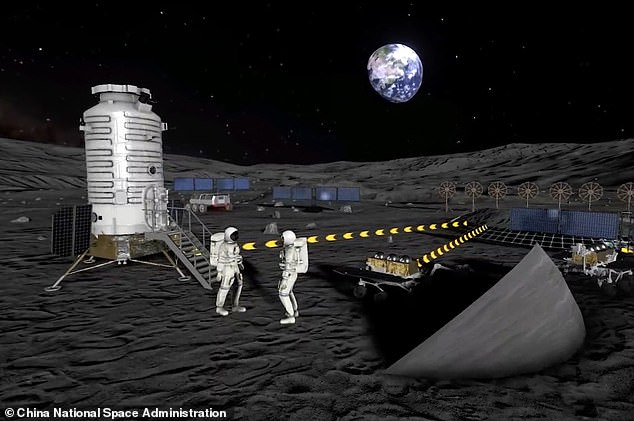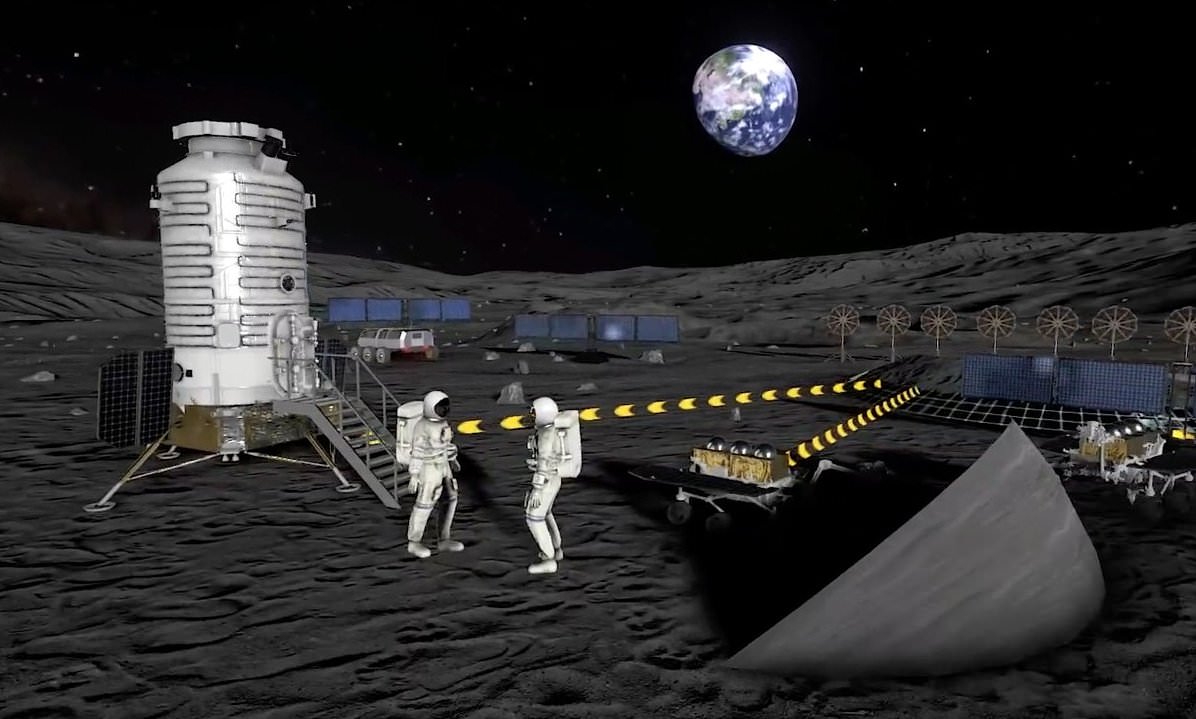China
is contemplating constructing a nuclear facility on the lunar surface to supply energy for a research outpost
Russia
On Wednesday, a presentation was conducted by a high-ranking official.
The nation in East Asia intends to establish itself as a leading force in space exploration with plans to send crewed missions to the moon by 2030. The proposed Chang’e-8 mission scheduled for 2028 will serve as a foundation for building a continuous human presence on the lunar surface.
During a presentation in Shanghai, Chief Engineer Pei Zhaoyu of the 2028 mission demonstrated that the lunar base’s power supply might rely not only on conventional means but also on extensive solar panels. Additionally, he highlighted the potential use of pipelines and cables installed on the Moon’s surface for both heating and electrical needs.
Roscosmos, Russia’s space agency, announced last year that it intended to construct a nuclear-powered facility on the lunar surface alongside the China National Space Administration (CNSA) by 2035. This project aims to support the International Lunar Research Station (ILRS).
The inclusion of the
nuclear power
A segment in a presentation by a Chinese space authority during a conference attended by representatives from the 17 nations and international bodies comprising the ILRS indicates
Beijing
backs the notion, even though it hasn’t officially declared it.
‘A key concern for the ILRS is power supply, and here Russia holds a natural edge due to its expertise in nuclear power plants. Particularly in deploying these reactors in space, where it ranks first globally, surpassing even the United States,’ noted Wu Weiren, who heads China’s moon mission, during an interview with Reuters at the event’s periphery.
Despite limited advancements in discussions regarding a space-based reactor previously, ‘This time I hope both nations can successfully deploy a nuclear reactor on the lunar surface,’ Wu stated.
China’s schedule for establishing a base at the moon’s south pole aligns with NASA’s more extensive and forward-looking Artemis program, aiming to return American astronauts to the lunar surface by December 2025.

Last year, Wu mentioned that a ‘basic version’ of the ILRS, centered around the Moon’s south pole, was slated for completion by 2035. Moving forward, China plans to launch the ‘555 Initiative.’ This ambitious project aims to engage 50 nations, collaborate with 500 global research organizations, and welcome participation from 5,000 scientists worldwide in the development of the ILRS.
Scientists from Roscosmos also shared their insights at the conference in Shanghai, discussing their intentions to search for mineral and water reserves. They potentially considered utilizing lunar materials as fuel sources as part of these efforts.
The ILRS emerged before Russia’s invasion of Ukraine in 2022, yet the motivations for collaboration between Roscosmos and CNSA have grown stronger since the start of the conflict, as per insights from Chinese experts.
As China continues to make significant strides in technology and achieves milestones with its lunar missions, and considering how Western sanctions hinder Roscosmos’s access to numerous imports related to space technology and equipment, China has an opportunity to ‘ease the strain’ on Russia. This could assist Russia in making new advancements in areas such as satellite deployments, moon explorations, and space station projects, according to Liu Ying, a scholar affiliated with the Chinese Foreign Ministry’s Diplomatic Academy, who penned this view in a published paper earlier last year.
Read more


